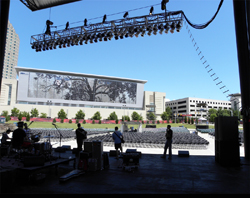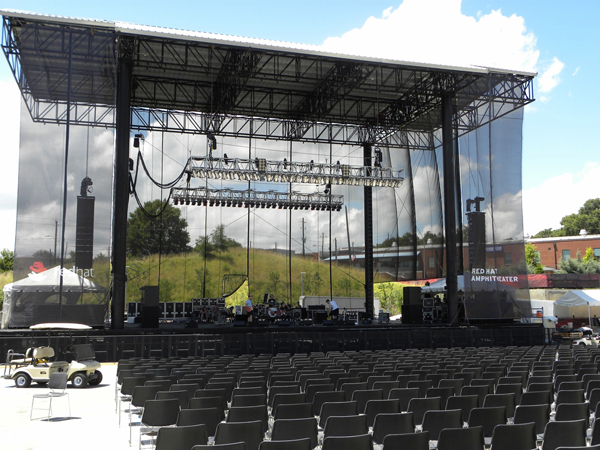
The proprietary software mentioned earlier helps in determining the array configurations, as well as to control each of the “cells” (transducers) in the multi-cellular loudspeakers to produce the desired results.
Further, MLA enclosures don’t fall victim to the 3 dB decrease in SPL that occurs with the doubling of distance, a common factor of “traditional” line arrays. As a result, the frequency response and SPL levels at the rear of the seating area can be selected to closely mirror what’s heard in the front.
In practical terms, the RMB team had the tools they needed to sonically map the area of coverage, optimize each audience section uniformly, and then “hard avoid” spots where coverage had to end to avoid both spillage into the surrounding neighborhood as well as objects that would create reverberation.
“With MLA, we weren’t forced into the usual trial-and-error setup situation,” Cannady notes. “There was no guesswork. Given our measurements and the software, it was more like a science when it came to setting up the rig. Gaining the control, consistency, and sonic quality we were after was a matter of fact, not discipline.”
Within The Confines
Following RMB’s install of MLA Compact at the head of the main system, the city was pleased with the outcome.
In earlier efforts to conquer the sonic challenges at Red Hat, engineers had experimented with multiband compression around 63 Hz without getting too concerned about phase affect, restricted the number of flown components, and tried to EQ their way out of this difficult trick bag.
All those things considered, perhaps the ultimate validation of the RMB design came from Red Hat house audio technician Troy Wallace, who had the responsibility of monitoring SPLs for all the acts performing at the venue over the course of the 2013 season. He kept tabs on Red Hat’s sound using real-time monitoring, including Rational Acoustics Smaart, which was calibrated to monitor the Raleigh ordinance guidelines of not exceeding 95 dB(C) SPL at 63 Hz. Measurement was continual with logging per minute.
“RMB’s implementation of the MLA Compact system had the most significant success because of its ability to start and stop the sound within the confines of the amphitheater,” Wallace states. “Reflections off of neighboring buildings and phasing affects were curtailed as a result. Overall, avoidance of reflections from adjacent structures as well as the limitations placed on the propagation of sound into surrounding areas was most remarkable.”
Gregory A. DeTogne is a writer and editor who has served the pro audio industry for the past 30 years.

